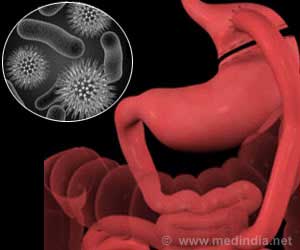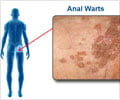
‘An immune signalling protein called IL-26 is present at high levels in the lungs of chain tobacco smokers.’
Tweet it Now
Dr Karlhans Fru Che and Professor Anders Lindén at Karolinska Institutet, Stockholm, led a team of researchers from universities in Sweden and Finland to investigate why chronic smokers with lung disease have such high levels of neutrophils. They found that an immune signalling protein called IL-26 is present at high levels in the lungs of these patients. This IL-26 is thought to be a pro-inflammatory ’neutrophil mobilizer’ and has previously been found at high concentrations in patients with autoimmune conditions such as Crohn’s disease and rheumatoid arthritis, as well as chronic infections such as hepatitis C, all of which are also associated with excessive accumulation of neutrophils. "Previous research shows that the immunological alterations in the airways of chronic smokers, with or without COPD and chronic bronchitis, include an excessive accumulation of neutrophils in parallel with an enhanced frequency of bacterial infections. Our findings show for the first time that IL-26 may be involved in the mobilization of neutrophils and in the response to bacterial colonization in chronic smokers with or without COPD" commented the lead author on the study, Dr Karlhans Fru Che from Karolinska Institutet, Sweden.
Dr Che and his colleagues looked at the effects of water-soluble tobacco smoke components on human lung cells and found that the exposure triggered the cells to start producing higher than normal amounts of IL-26. They also found increased amounts of other pro-inflammatory proteins in the tobacco-exposed cells such as NF-κB, which appeared to increase in response to increased IL-26 concentrations. Abnormal regulation of NF-κB has been linked to autoimmune disease, infections and cancer in other research.
While the researchers found that IL-26 levels were higher than normal in the chronic smokers, regardless of whether they had clinically stable COPD, they also found that those who did have chronic bronchitis or growth of bacteria had higher levels of IL-26 than those who did not. Moreover, the chronic smokers with exacerbations of COPD had higher levels of IL-26 than those with clinically stable COPD.
"In a previous study, we showed that IL-26 is released by a bacterial compound in healthy human airways and that it enhances the chemotactic response of neutrophils. By now showing that IL-26 is involved in the excessive mobilization of neutrophils in chronic smokers with or without COPD and chronic bronchitis, we strengthen the evidence that this cytokine bears potential as a target for monitoring of and therapeutic intervention in airway disorders characterized by neutrophilic inflammation. However, more studies are needed to improve the understanding of the more precise mechanisms of action of IL-26 before this cytokine can be targeted in clinical trials" explained Dr Che.
Advertisement
"Our findings position IL-26 as a promising molecular target that may help improve our understanding of the pathogenic mechanisms behind pulmonary morbidities in chronic tobacco smokers. This knowledge may prove useful for developing new diagnostic tools and criteria as well as for monitoring of disease over time. In a longer perspective, this knowledge may even prove useful for developing new therapy against tobacco-related lung diseases such as COPD, chronic bronchitis and, perhaps, against repeated bacterial infections in the airways." commented Dr Che.
Advertisement
Source-Eurekalert















